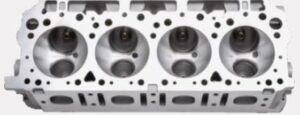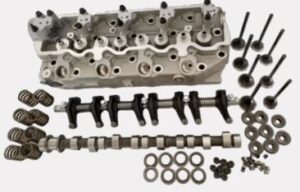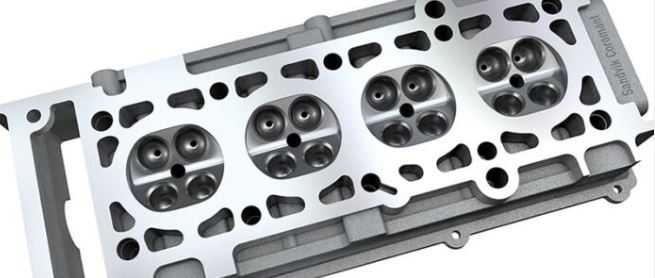Understanding the Car Cylinder Head: The Silent Powerhouse of Your Engine
When talking about the heart of a car’s engine, the cylinder head is often overlooked—yet it plays one of the most crucial roles in determining your vehicle’s performance and reliability. Whether you’re behind the wheel of a compact ride like the Changan Karvaan MPV Plus or a sophisticated SUV like the Changan Oshan X7 Comfort, the cylinder head works tirelessly to keep your engine running smoothly and efficiently.
In this guide, we’ll take a closer look at what a cylinder head is, its key components, its function, and how to spot issues before they lead to serious engine damage.
What is a Car Cylinder Head?
The cylinder head, also called the “car head cylinder,” sits on top of the engine block and seals the top of the combustion chamber. It plays a central role in the combustion process, housing vital parts such as intake and exhaust valves, spark plugs (for gasoline engines), and fuel injectors. It’s also where the combustion of fuel and air takes place, powering your vehicle forward.

Key Functions of the Cylinder Head
The cylinder head is essential for the following functions:
-
Sealing the combustion chamber to maintain compression
-
Housing critical engine components like valves, spark plugs, and injectors
-
Regulating airflow and fuel mixture for combustion
-
Circulating coolant to prevent engine overheating
Modern vehicles like the Changan Deepal S07 are engineered with advanced cylinder head designs that enhance fuel efficiency and reduce emissions. You can learn more about its specifications here.

Main Parts of a Car Cylinder Head
Here are the key components found in a typical cylinder head:
-
Intake and exhaust valves
-
Valve springs and retainers
-
Camshaft (in OHC/DOHC designs)
-
Rocker arms
-
Spark plugs
-
Injector nozzles
-
Cylinder head gasket
Each part must function harmoniously to keep your vehicle performing at its best. This is especially true in newer models such as the Changan Deepal S07, available on an easy EMI plan.
Simplified Cylinder Head Layout (Conceptual Overview)
Although we can’t show a visual diagram here, imagine the structure as follows:
-
Top Layer: Camshaft → Rocker Arms → Valves
-
Middle Section: Spark Plug and Injector
-
Bottom Layer: Cylinder Head Gasket sealing the combustion chamber
This layout may vary slightly across different models, such as the Changan Oshan X7 Comfort, but the fundamental architecture remains consistent.
What is the Cylinder Head Gasket?
The cylinder head gasket is a thin, high-pressure seal between the cylinder head and the engine block. Its role is to:
-
Prevent oil and coolant leaks into the combustion chamber
-
Maintain compression inside the engine
-
Allow coolant and oil to circulate properly
A failed gasket can lead to catastrophic engine damage, so early detection and repair are vital.

Cylinder Block and Its Connection to the Cylinder Head
The cylinder block forms the lower part of the engine and contains the engine cylinders. It works in tandem with the cylinder head to manage combustion, temperature regulation, and mechanical motion. Together, they are the foundation of engine performance.
Maintenance Tips for Your Cylinder Head
To keep your engine in excellent condition, follow these essential maintenance practices:
-
Schedule regular engine check-ups
-
Use high-quality coolant and engine oil
-
Inspect for leaks or overheating symptoms
-
Consider a new battery if your vehicle shows signs of slow ignition or electrical inconsistencies
These practices can help prevent common cylinder head issues and extend your engine’s lifespan.
Common Cylinder Head FAQs
What are signs of cylinder head problems?
Symptoms include overheating, engine misfires, white exhaust smoke, and oil leaks.
Can I drive with a bad cylinder head?
It’s not recommended. Prolonged driving can result in severe engine damage.
How do I know if a cylinder is failing?
Look out for poor acceleration, knocking sounds, or rough idling.
How long does a cylinder head last?
With proper care, cylinder heads can last 150,000 km or more—typically 10–15 years.
What causes cylinder head failure?
Overheating, failed gaskets, and poor lubrication are common causes.
Can a cylinder head be repaired?
Yes, minor cracks and warps can often be fixed. In severe cases, full replacement is necessary.
What’s the most frequent issue with cylinder heads?
Cracking due to excessive heat or blown head gaskets.
Is driving with a blown head gasket safe?
No. It can cause engine seizure or total failure.
What’s the cost of replacing a cylinder head?
Depending on the vehicle, it may cost anywhere from $500 to $1,500, not including labor.
Considering an Upgrade?
If you’re planning to upgrade your current vehicle, check out high-performance options like the Changan Deepal S07 or versatile family rides like the Karvaan MPV Plus 1.2 MPFi and Changan Oshan X7 Comfort.























